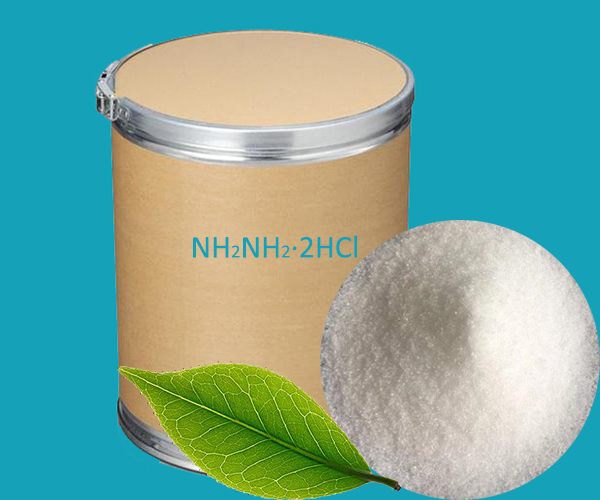Hydrazine hydrochloride (NH2NH2·2HCl) is a white crystalline powder that is hygroscopic, soluble in water and slightly soluble in ethanol. The density of hydrazine hydrochloride is 1.500, the melting point is about 89 °C, and the boiling point is 240 °C.
In chemical experiments, hydrazine hydrochloride is often used as a reducing agent and oxidant. It is also used in the preparation of dyes and dye intermediates. In addition, it can be used to clean metal surfaces , fuel cells, etc.
1. Chemical synthesis: As an important chemical raw material, hydrazine hydrochloride is often used as a reducing agent in organic synthesis, especially in the reduction reaction of double bonds. It is also used in the synthesis of pharmaceuticals, plastics, rubber, pesticides, and other chemicals.
2. Rocket fuel: Hydrazine hydrochloride is a high-performance rocket fuel, especially in the aerospace industry. When it is mixed with oxidizing agents such as nitric acid or hydrogen peroxide, it can produce a lot of heat energy and thrust.
3. Cleaning agent: In the metalworking and electronics industries, hydrazine hydrochloride can be used as a cleaning agent to remove oxides and contaminants from metal surfaces to improve the cleanliness of metals and the quality of welds.
4. Dye manufacturing: hydrazine hydrochloride is used in the dye industry to produce azo dyes and other types of dyes and dye intermediates.
5. Pharmaceutical intermediates: In the pharmaceutical industry, hydrazine hydrochloride is used in the synthesis of a variety of drugs, including antibiotics, antivirals, and other pharmaceutical products.
6. Laboratory application: In the laboratory, hydrazine hydrochloride is often used as a chemical reagent, especially in reactions that require strong reducing properties.
7. Plating solution: In the electroplating process, hydrazine hydrochloride can be used as a part of the electroplating solution to improve the quality and efficiency of electroplating.
8. Fuel cells: Hydrazine hydrochloride is also used as a clean fuel for fuel cells, especially in applications that require high energy density.
 English
English Español
Español Português
Português Français
Français Deutsch
Deutsch Русский
Русский 中文
中文 日本語
日本語
